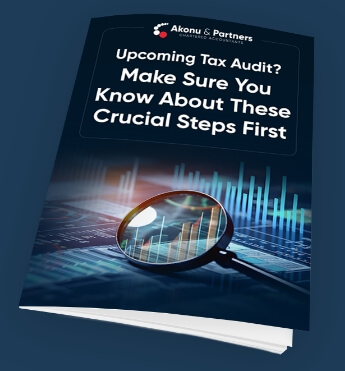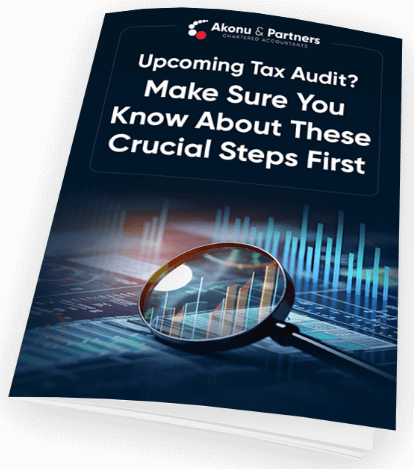Article 1
Understanding the Growth and Sustainability Levy Act, 2023 as amended
Introduction
The Growth and Sustainability Levy Act, 2023 (Act 1095) was enacted by the Parliament of Ghana and was assented to on the 3rd of April 2023 to introduce a special levy aimed at supporting the country’s growth and financial stability. This Act provides clear guidelines on how the levy is applied, collected, and managed. It replaced the National Fiscal Stabilisation Levy Act, 2013 (Act 862). However, the previous Act still applies to any assessments made before the new Act started, and any existing responsibilities or rights under the previous Act remains until they are resolved.
This levy was to be applicable for the fiscal years 2023, 2024, and 2025, targeting profits before tax or gross production of businesses outlined the schedule of the Act.
However, in 2025, the Government of Ghana following the passage of the National Budget and as part of its implementation amended the Growth and Sustainability Levy Act, 2023.
The amendment gazette on the 2nd April 2025 extended the period of the application of the law to 2028 from 2025 and has also increased the rate of the levy on mining companies and upstream oil and gas companies to 3% from 1%.
Who does this affect?
The levy is applicable to a broad range of businesses and institutions listed in the specified schedule of the Act (refer to appendix 1), irrespective of any tax holidays or exemptions applicable to the entity under other laws or agreements.
Who is exempt from the levy?
Individuals are exempt from filing and payment of the levy.
Do partnerships need to file and pay the levy?
In Ghana, partnerships are treated as fiscally transparent for tax purposes. This means that the partnership itself is not subject to tax; instead, the individual partners are taxed on their share of the partnership’s profit. The partnership serves as a conduit for passing income to its partners, who are taxed individually.
The Act defines an entity to include companies, partnerships, and trusts. However, it also exempts individuals from the levy. This presents a unique situation for partnerships, especially considering the tax treatment of partnerships in Ghana.
Since the Growth and Sustainability Levy Act exempts individuals, and individual partners of partnerships are taxed in their personal capacity, this raises the question: Should partnerships be subject to the levy, given that the partners themselves (who are individuals) are exempt?
While the Act includes partnerships in its definition of “entity,” the fiscal transparency of partnerships could be a strong argument for their exemption from the levy. Since the levy applies to entities and not individuals and considering that the income of a partnership is ultimately taxed at the individual level, one could argue that partnerships, by extension, should not be liable for the levy.
Additionally, imposing the levy on partnerships would create an inconsistency, as it would effectively bypass the individual exemption, which forms the basis for how partnerships are taxed in Ghana.
Following from the foregoing, it may be prudent for the Ghana Revenue Authority to clarify this point. Until further guidance is issued, partnerships could potentially argue that they fall under the exemption granted to individuals, given the approach for the taxation of partnerships in Ghana.
What about NGOs and other charitable organizations?
Based on the Act and the nature of NGO operations, it’s reasonable to argue that NGOs should generally not be required to pay the levy.
NGOs typically operate as non-profit entities whose activities are charitable, educational, or social in nature. In many legal frameworks, including in Ghana, NGOs enjoy tax exemptions on income and are not typically treated the same as profit-making entities. This would suggest that the levy, designed to target businesses generating profit in strategic sectors, may not apply to NGOs.
The Growth and Sustainability Levy is aimed at entities that derive economic benefits, such as corporations in sectors like banking, telecommunications, insurance, and extractive industries. These sectors are commercial in nature and generate profit for shareholders. NGOs, however, are non-profit entities and don’t fall within the typical definition of sectors generating taxable profits.
Although the Act defines “entity” broadly to include companies, partnerships, and trusts, NGOs are not specifically mentioned in the categories of organizations required to pay the levy. The absence of NGOs from the defined list of liable entities, along with their non-profit status, implies they were not the intended targets of this levy.
The phrase “any entity not falling under A or B shall form part of C” mentioned in the Act, is intended to ensure that no business or organization escapes the levy purely due to technicality. However, this provision does not necessarily imply that non-profit entities like NGOs should be included. Instead, it seems to target ‘for-profit businesses’ that do not fit into the specific industries listed in A or B, such as businesses in manufacturing or services outside the exempted sectors.
Since NGOs operate under different rules (often enjoying tax exemptions), their inclusion in Category C seems unlikely to align with the intent of the law. They are non-commercial entities and should not be subject to the same levies as profit-generating businesses, even under Category C
Given the nature of NGO operations, their tax-exempt status, and the fact that the levy seems designed for profit-oriented businesses in strategic sectors, it is reasonable to conclude that NGOs are not liable for the Growth and Sustainability Levy. However, it would be prudent for NGOs to seek clarification from the Ghana Revenue Authority (GRA) if they have concerns about their obligations under the Act, especially if they engage in any profit-generating activities that may warrant further scrutiny.
How is the levy calculated?
The levy is determined as a percentage of either the profit before tax or gross production, as specified in the Act’s schedule (refer to appendix 1). It is important to note that this levy is non-deductible when computing chargeable income under the Income Tax Act of 2015, (Act 896). This means that the amount paid as a levy will not reduce your taxable income.
Filing and payment deadlines
Compliance with this levy requires businesses to file an estimate of the payable levy for the year with the Commissioner-General by the first tax instalment payment date. Payments are due quarterly on March 31, June 30, September 30, and December 31 each year. It’s essential to adhere to these deadlines to avoid any penalties.
How is the levy assessed, filed and paid on the portal?
The Commissioner-General may provisionally assess a taxpayer who is eligible to pay the levy or taxpayers who are eligible to pay the levy can assess themselves (self-assessment) to file and pay the levy.
Taxpayers who are eligible to file and pay the levy should follow the following steps:
- Go to the GRA Taxpayers’ Portal Website https://taxpayersportal.comor open the Ghana Taxpayers’ App on your device.
- Login with registered account details.
- On the menu, click on FILE YOUR RETURNS. This displays the returns that are pending to be filed,
- Click on the FILE NOWbutton next to the return Growth and Sustainability Levy to be filed.
- Fill the form with the necessary details and submit when done.
- Proceed to make payment on the Ghana.gov platform.
Ensuring compliance
The enforcement of this levy is backed by the provisions of the Revenue Administration Act of 2016. These provisions cover all aspects of levy recovery, including collection, enforcement, refunds, penalties, and offenses. It is vital for businesses to familiarize themselves with these regulations to ensure full compliance and avoid any legal complications.
By understanding and adhering to these new regulations, businesses can ensure they remain compliant and avoid any potential penalties. If you have any questions or need further clarification, our team is here to assist you in navigating these changes.
Appendix 1
The Schedule of the Act categorizes entities and specifies the applicable levy rates
| Category | Rate of levy |
| Category A
· Banks, · Non-Bank Financial Institutions, · Insurance companies, · Telecommunications companies, · Breweries, · Inspection and valuation companies, · Companies providing mining support services, · Bulk Oil Distributors, · Oil Marketing Companies, · Communication Tower Operators, · Companies providing upstream petroleum services, · Companies and institutions registered by the Securities and Exchange Commission, · Specialized Deposit-Taking Institutions, · Electronic Money Issuers, · Shipping lines, maritime and airport terminals |
5% of profit before tax |
| Category B
· Mining companies and upstream oil and gas companies |
3% of gross production as per the amendment ( originally 1% of gross production) |
| Category C
· All other entities not falling within Category A or B |
2.5% of profit before tax |
Author: Wise Amegah (CA)
Article 2
Incorporating Growth and Sustainability Levy into the Financial Statements
Given that the levy is not treated as an allowable expense and is to be charged as a percentage of the profit before tax, it should be reflected as a separate line item in the income statement. Specifically, it should be included as part of the calculation of income taxes, considering it is a tax on profits.
Below is a suggested format for the income statement, demonstrating the incorporation of the growth and sustainability levy:
Income Statement
| Revenue | XXXXX | |||
| Cost of goods sold | (XXXX) | |||
| Gross profit | XXXXXX | |||
| Other income | XXX | |||
| Operating expenses: | ||||
| Operating expense 1 | (XXXX) | |||
| Operating profit (loss) | XXXXX | |||
| Finance cost | (XX) | |||
| Profit (loss) before tax | XXXXX | |||
| Growth and sustainability levy | xx | |||
| Income tax | xxx | |||
| Profit or loss for the year | XXXXX | |||
In this format, the growth and sustainability levy is explicitly shown as a deduction from the profit before tax. The corresponding entry for this levy should be credited to the bank in the cashbook if it has been paid, or credited to the levies payable account in the Balance Sheet if it remains unpaid for the period. This ensures that it is properly accounted for in the financial statements and aligns with its treatment as a percentage of the profit before tax.
Author: Wise Amegah (Assistant Manager)


